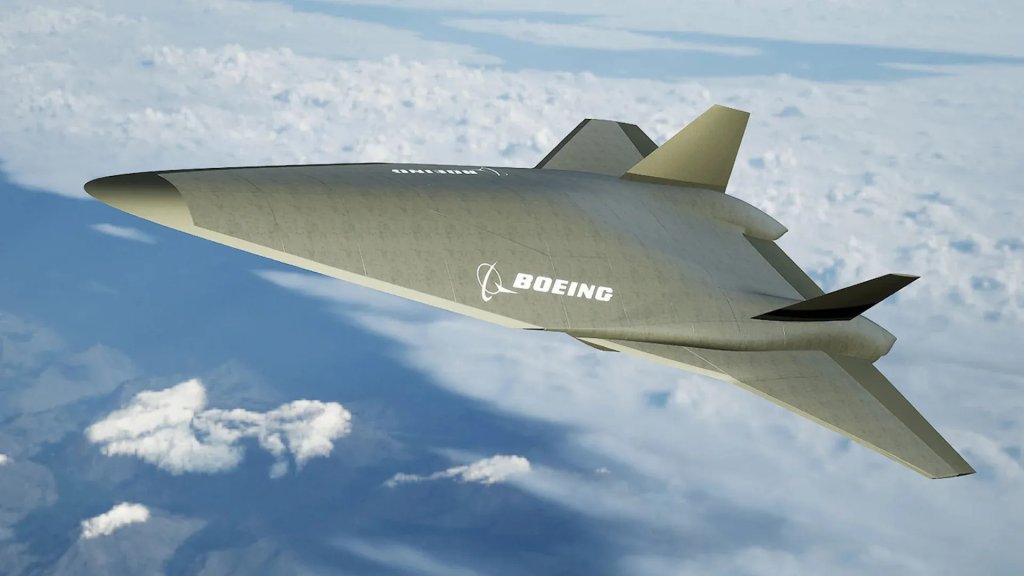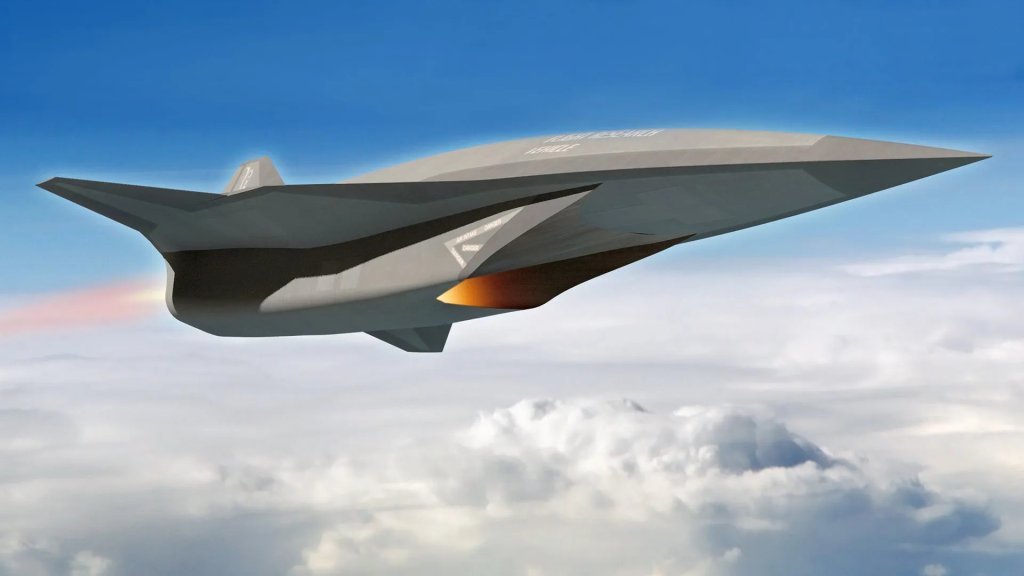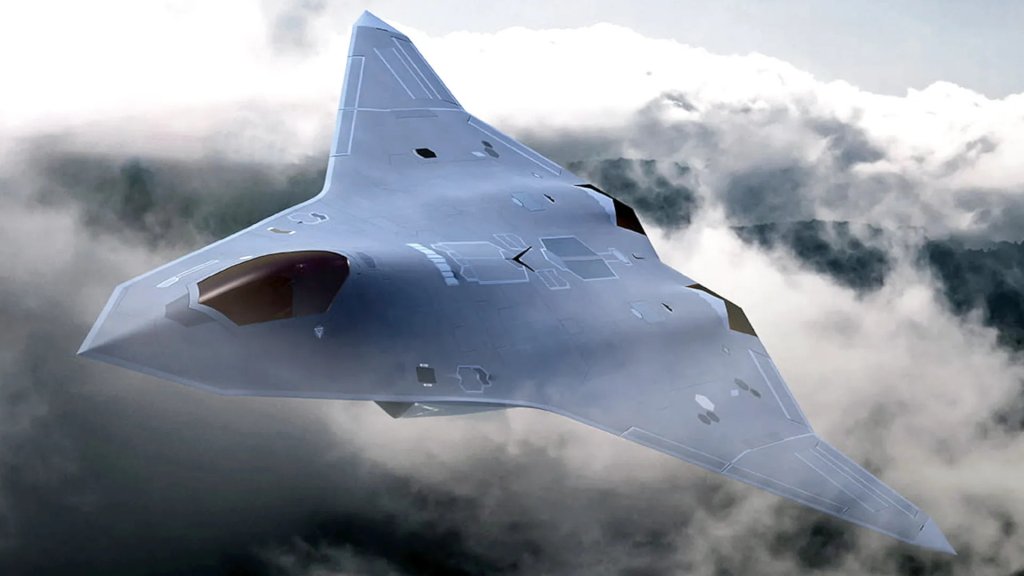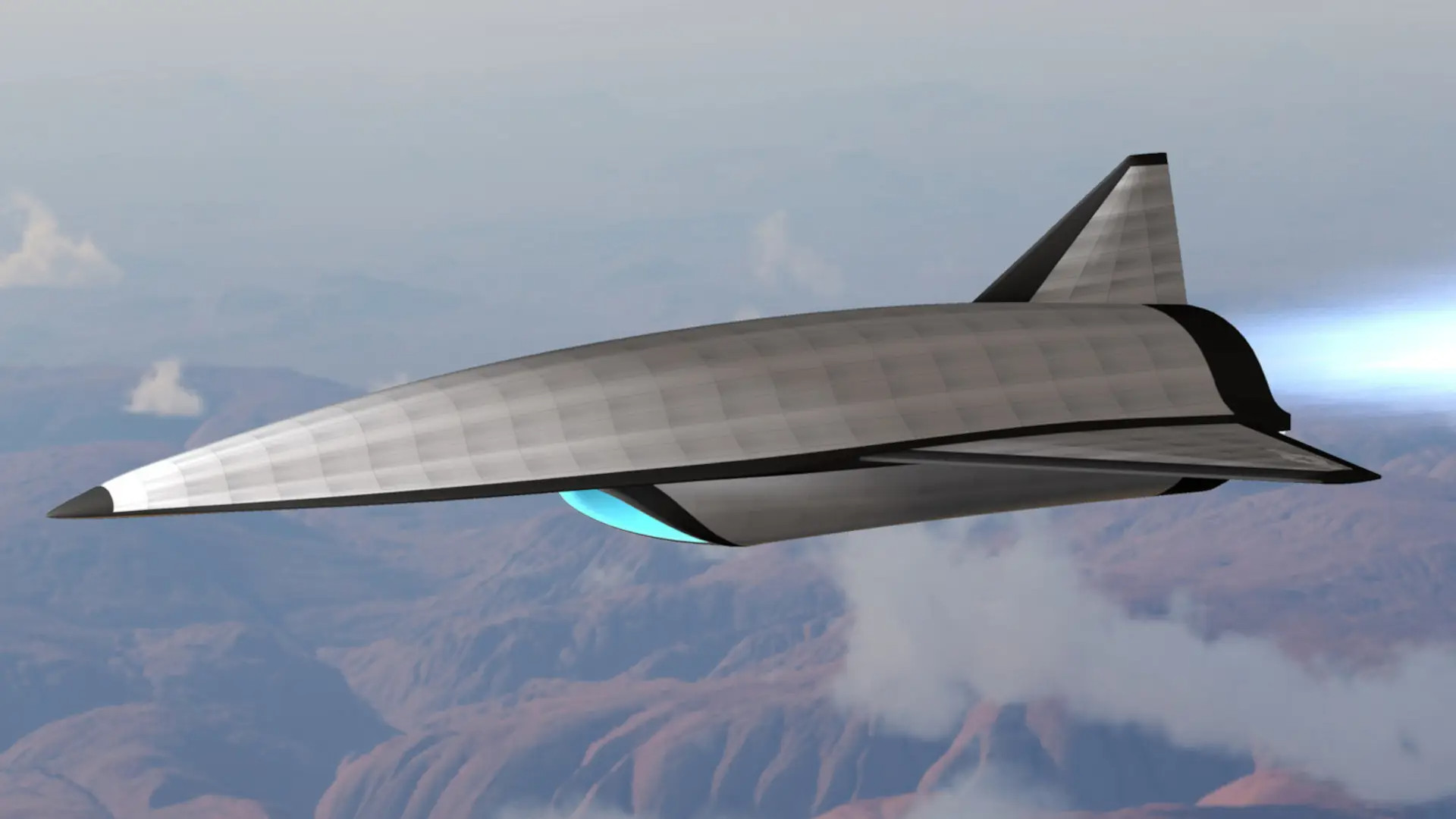The U.S. Air Force, in cooperation with the Defense Advanced Research Projects Agency (DARPA), is still exploring concepts for a reusable hypersonic air vehicle capable of performing strike and intelligence, surveillance, and reconnaissance (ISR) missions. Work being done now could lead to the start of the development of a flying Next Generation Responsive Strike (Next RS) prototype or demonstrator within the next five years. A secretive Air Force program called Mayhem, with very similar stated objectives, had become mired in uncertainty last year, including over whether there was even demand for a capability of this kind.
The Next RS concept has emerged quietly over the past year or so in multiple DARPA contracting notices seeking proposals to meet various relevant technological needs. Aviation Week was first to report on the effort earlier this month.
“[DARPA’s] Aerospace Projects Office (APO), working in close partnership with [the] Air Force Research Laboratory (AFRL) and the National Aeronautics and Space Administration (NASA), develops and demonstrates technologies which enable Next Generation Responsive Strike (Next RS) air platforms,” one DARPA contracting notice released Feb. 5 states. “APO envisions reusable hypersonic aircraft attributes providing future multi-mission strike/ISR capabilities against targets protected by advanced air defense systems. APO is seeking innovative technologies that close the gap between the state-of-the-art in reusable hypersonics and the level of technical maturity required to initiate a NextRS Y-Plane design and development program later this decade.”

The notice lists six technological areas of interest that APO sees as key to advancing the Next RS concept: structures and materials, high-speed weapon separation, dual-mode propulsion, power generation, thermal management systems, and a high-Mach turbine engine.
When it comes to dual-mode propulsion, APO is specifically looking at “technologies that allow continuous powered operation of a Turbine Based Combined Cycle (TBCC) propulsion system over the entire flight envelope.” Advanced high-Mach turbine engine technology will also “allow efficient TBCC operations through ascending and descending mode transition without the need for water injection.”
“DARPA seeks a better understanding of High Mach Gas Turbine (HMGT) developments to date and what technologies are needed to advance such an engine to the preliminary design level,” a separate Next RS-related contracting notice posted online in April 2024 adds. “If this engine is going to be developed in the near term, DARPA also believes an existing core is needed as the heart of such an engine development program.”
The April 2024 notice, which also highlights DARPA’s work already on TBCC propulsion through the past Advanced Full Range Engine (AFRE) program, lays out a notional requirement for an HMGT capable of producing 30,000 to 38,000 pounds of continuous thrust. Other projected performance specifications are classified.
A practical TBCC propulsion system has long been viewed as something of a holy grail for very high-speed aircraft design. Ramjets and scramjets typically used to propel air-breathing air vehicles to hypersonic speeds, typically defined as anything above Mach 5, do not work properly at subsonic speeds and can have trouble operating efficiently even at low-supersonic speeds. As such, a significant initial boost velocity, usually provided by a rocket motor, is required before those engines can kick in. A TBCC combines ramjets/scramjets with jet turbines that work at lower speeds and offers the ability to seamlessly shift from one mode to the other. An air vehicle with a TBCC propulsion system would be able to take off and land from suitably long existing runways, but cruise at high-supersonic or even hypersonic speeds, offering immense operational flexibility.

The explicit mention in DARPA’s Feb. 5 contracting notice of “technologies that allow weapons, weapon bays and ejection systems to accommodate hypersonic separation from aircraft and flyout to the target” is also worth discussing. Any air vehicle flying at hypersonic speed is subjected to immense physical and thermal stresses. Designing a payload bay that can safely open and release something under those conditions presents significant additional challenges. Whatever payload might be released would also be moving at hypersonic speeds, at least initially, and need to be able to withstand those stresses. The development of bespoke munitions would likely be required for an operational Next RS platform.
“The recent development of hypersonic weapons, whether scramjet based or boost-glide based systems, brought with it a resurgence in structural concepts and material development that could survive the hypersonic environment and weapon-like life cycles and timelines,” another contracting notice related to Next RS put out in April 2024 says, adding further context to the substantial materials science and engineering requirements. “Advances in thermal protection systems, ‘hot’ structures and additively manufactured structures accompanied these development efforts. Likewise, research in composite materials such as carbon-carbon, infused carbon-carbon or ceramic matrix composites has followed.”
“These structural and material advances for hypersonic weapons are a necessary but not sufficient step towards enabling hypersonic aircraft structures which need to be reusable over larger operational timelines, weight efficient over large surfaces/airframes and primarily designed for thermal loads rather than mechanical loads,” that notice, which expresses interest in “reusable, weight efficient, thermally driven, metallic airframe and skins,” adds.
No further details about the platform or platforms that DARPA and the Air Force might be envisioning for Next RS, including overall size or payload capacity, are provided in any of the contracting notices. As of yet, there are no clearly defined requirements that would point to a large aircraft with a big payload.
When reached for additional information about the Feb. 5 contracting notice, DARPA told TWZ it could not provide anything else. TWZ has also reached out to AFRL and NASA.

However, the details about Next RS in hand now are extremely similar to how AFRL previously described the Mayhem program, also referred to as Hypersonic Multi-mission ISR and Strike, and an adjacent effort called Enabling Technologies for High-Speed Operable Systems (ETHOS). Leidos won a contract to develop a scramjet-powered Mayhem air vehicle, which was also expected to be air-launchable from another aircraft, in 2021. Leidos’ team also included Calspan, the Draper Laboratory, and Kratos Defense & Security Solutions.
However, by the beginning of last year, Mayhem’s future had become very murky.
“AFRL is neither terminating the initial task order nor the Indefinite Delivery, Indefinite Quantity (IDIQ) contract,” Air Force Col. Aaron Tucker, the High Speed Systems Division Chief at AFRL’s Aerospace Systems Directorate, told TWZ in February 2024. “The initial task order will be fulfilled with a conceptual design review.”
“The Mayhem program did not receive funding in fiscal year 2024 to proceed beyond the scope of task order 1 (CoDR/SRR),” Tucker added. “This funding decision results in a year-for-year slip in the development of a digital design and enabling technologies for an air-launched hypersonic ISR [intelligence, surveillance, and reconnaissance] & strike capability until funds are restored.”
Furthermore, “although AFRL is not terminating the existing contract with Leidos, the operational pull is not clear enough to warrant significant investment to launch and deliver a more complete design package suitable for an acquisition program,” AFRL spokesman Bryan Ripple also told TWZ at that time. “AFRL may seek to add additional task orders to the Leidos contract in the future.”
“Air Force Global Strike Command [AFGSC] is conducting an Analysis of Alternatives, or AoA, over the next year to refine the requirement for high speed strike and the Office of the Secretary of Defense, or OSD, is continuing to refine leap ahead capability for reuseable applications,” Ripple added.
“What we are more interested in right now, in terms of a feasibility perspective, is a high-mach turbine engine,” a U.S. Air Force official also told TWZ when asked about AFGSC’s interest in Mayhem in February 2024.
The current status of Mayhem is unclear and there is a possibility that Next RS is a follow-on or otherwise adjacent to that program.
Mayhem, which first emerged back in 2020, has also been tied to another project called the Multi-Mission Cruiser and work on TBCC propulsion systems. The program appearance also followed a still highly curious burst of public discussion around reusable hypersonic aircraft capable of performing strike and ISR missions toward the late 2010s. Central to this was Lockheed Martin’s Skunk Works advanced projects division very actively promoting a concept called the SR-72 – a reference to succeeding the company’s famed SR-71 Black Bird spy plane – and related developments. Former company CEO Marillyn Hewson talked openly about potentially building a fighter-sized hypersonic demonstrator for less than $1 billion in 2016. Rob Weiss, then head of Skunk Works, described hypersonic technology as “mature” at the American Institute of Aeronautics and Astronautics Aviation Forum the following year and there were reports that an actual flight test of a relevant design could come by 2018. Lockheed Martin’s pronouncements even prompted Boeing to subsequently present a competing concept called Valkyrie.

By the end of the 2010s, the SR-72 had disappeared from Lockheed Martin’s website and other promotional materials. Talk about the design resurfaced around Skunk Works’ creation of a fictional hypersonic aircraft called the Darkstar for the 2022 blockbuster movie Top Gun: Maverick, a design said to be so realistic that parts of it “could be more than mere fiction.”

In 2022, Boeing also released a rendering of a new hypersonic aircraft design, seen below, which looked to have evolved from Valkyrie. The company would not say whether or not it was related to a pitch for Mayhem or work tied to any other U.S. government project.

The Air Force has also publicly worked with various other firms on hypersonic aircraft concepts and related technologies, including with the Hermeus Corporation and Exosonic just in the past few. DARPA and NASA have done extensive research and development related to reusable hypersonic air vehicles over the years, as well. Hermeus has notably been working on a TBCC propulsion system called Chimera. The company is also progressing toward the first flight of its uncrewed Quarterhorse Mk. 1 aircraft, which is powered by a very mundane J85 turbojet engine and is not expected to fly at even supersonic speed. Quarterhorse Mk. 1 is the first of a planned series of designs with progressively more capable propulsion arrangements.

We also don’t know what else might have been or is still going on in the classified realm in terms of reusable hypersonic aircraft, including with regard to the SR-72 or a similar concept. Running unclassified efforts in parallel with classified ones is not unheard of, and doing so presents benefits, including allowing for the solicitation of proposals to meet certain needs from a wider pool of sources. Whether Next RS reflects work already being done in the classified domain is unknown.
Regardless, as TWZ has written in the past about Mayhem:
“Still, a reusable uncrewed air-launched hypersonic strike and reconnaissance aircraft could certainly offer benefits in various operational scenarios. Such a system could be ideal for prosecuting time-sensitive targets, or just gathering intelligence on them, including deep in denied areas at extreme stand-off ranges. From an ISR perspective, spy satellites, which might be the only other option for collecting on the targets in question, could take too long to retask and are predictable, with the enemy knowing when they will pass overhead.”
“An air-launched reusable platform could offer additional flexibility in terms of vector of approach and timely arrival over a target area compared to regional ground and surface-launched concepts.”
At the same time, there is a question about whether what a reusable hypersonic aircraft, with all of its complexities, has to offer could be better provided by other capabilities, such as stand-off munitions, including hypersonic types.
Whether or not Next RS or any other project leads to an operational reusable hypersonic strike/ISR platform very much remains to be seen. An official Air Force report detailing a vision for that service, as well as the U.S. Space Force, by 2050, which was published in December, notably makes no mention of reusable hypersonic air vehicles, though it does talk about expendable hypersonic weapons. That report did also highlight ever-more serious air defense threats, including anti-air missiles with ranges of up to 1,000 miles, which is in line with the stated drivers behind the Next RS effort.

Earlier this month, Secretary of Defense Pete Hegseth also ordered the Air Force to pause a large swath of modernization efforts until a new Air Force secretary has been confirmed and can review those plans. Hegseth has also issued a memo directing a review of proposed Fiscal Year 2026 spending plans with a goal of shifting roughly eight percent of the entire Department of Defense budget, or approximately $50 billion, to new Trump administration priorities like the Iron Dome missile defense initiative, according to Breaking Defense. The memo, which has not been released publicly, was first reported on by The Washington Post.
The Air Force has already been facing an increasingly serious crisis over the affordability of its many modernization priorities. Budgetary concerns, driven in large part by the ballooning costs of the Sentinel intercontinental ballistic missile (ICBM) program, notably triggered a deep review last year of plans for a new sixth-generation crewed combat jet being developed under the Next Generation Air Dominance (NGAD) initiative. No decision about the NGAD combat jet’s future, which is also intertwined with planning around new Collaborative Combat Aircraft (CCA) drones and stealth aerial refueling tankers, has been announced so far. All of this has fed into new questions about the optimal size of the future B-21 Raider stealth bomber fleet, as well.

What is clear from the emergence of Next RS in the DARPA contracting notice this month is that there remains at least some interest within the Air Force in a reusable hypersonic strike/ISR platform.
Contact the author: joe@twz.com
